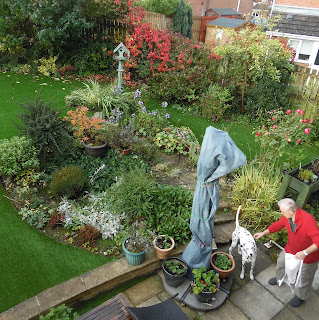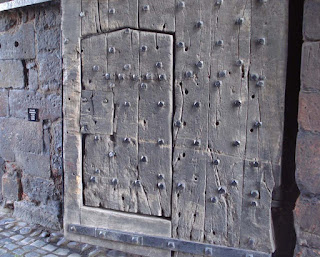Newcastle has been its name since the Norman conquest of England. I suppose it is my
city, since I was born there, though I lived in Durham city from leaving
Princes Mary’s until I was seven years old.
In or about AD 120, the Romans built the first bridge to cross the River
Tyne. Aelius was the family name of Emperor Hadrian who built a wall across northern
England along the Tyne–Solway gap. His wall runs through present-day Newcastle;
stretches of wall and turrets exist along the West Road, and various other bits
can still be found: a temple in Benwell, a milecastle on Westgate Road,
midway between Clayton Street and Grainger Street. The course of the wall corresponded
to present day Westgate Road. It runs eastwards to the Segedunum Roman fort at Wallsend, with the fort Arbeia further down river, on the
south bank in what is now South Shields.
The Tyne was then a wider, shallower river and the bridge was probably
about 700 feet (210m) long, made of wood and supported on stone piers. Probably
sited near the current Swing Bridge since Roman artefacts
were found there during its building.
A shrine was set up on the completed bridge in AD123 by the VIth Legion,
with two altars to Neptune and Oceanus respectively. The two altars were
subsequently found in the river and are on display in a local museum.
A stone-walled fort stood on a rocky
outcrop overlooking the new bridge, (where the present Castle Keep stands) to protect the river
crossing at the foot of the Tyne Gorge.
It is believed that there was a Roman
cemetery Near Clavering Place, behind the Central station,
for a number of Roman coffins have been unearthed there. A small vicus,
or village, would likely have grown around the fort but nothing beyond a few
pieces of flagging have been found.
The Angles arrived in the North-East of England in about AD 500 perhaps
landing on the Tyne though there is no evidence of an Anglo-Saxon settlement on
or near the site of Pons Aelius.
At that time the region was dominated by Bernicia, north of the Tees and ruled from Bamburgh, and Deira, south of the Tees
and ruled from York. Bernicia and Deira
combined to form the kingdom of Northanhymbra (Northumbria) early in the 7th
century.
Three local kings held the title of Bretwalda –Edwin of
Deira(627–632),
Oswald of Bernicia (633–641)
and Oswy of Northumbria (641–658).
The 7th century became known
as the 'Golden Age of Northumbria', when the area was a beacon of culture and
learning in Europe. The greatness of this period was based on its generally
Christian culture and gave birth to the Lindisfarne Gospels. The Tyne valley
was dotted with monasteries, with those at Monkwearmouth, Hexham and Jarrow being the most
famous. Bede, based at Jarrow,
wrote of a royal estate, known as Ad Murum, 'at the Wall', 12 miles (19km)
from the sea. This estate may have been in what is now Newcastle.
At some unknown time, Newcastle came to be known as Monkchester though
nothing is known of specific monasteries
at the site, and Bede made no reference
to it. In 875 Halfdan Ragnarsson, the Danish Viking conqueror of York,
led an army that attacked and pillaged various monasteries in the area, and it
is thought that Monkchester was pillaged at this time. Little more was heard of
it until the coming of the Normans.




